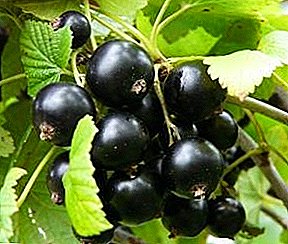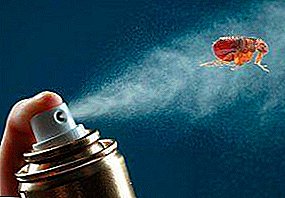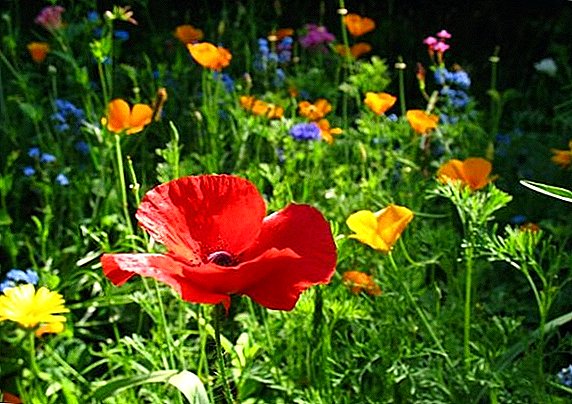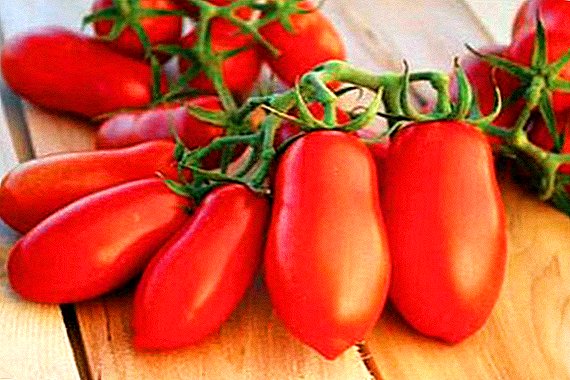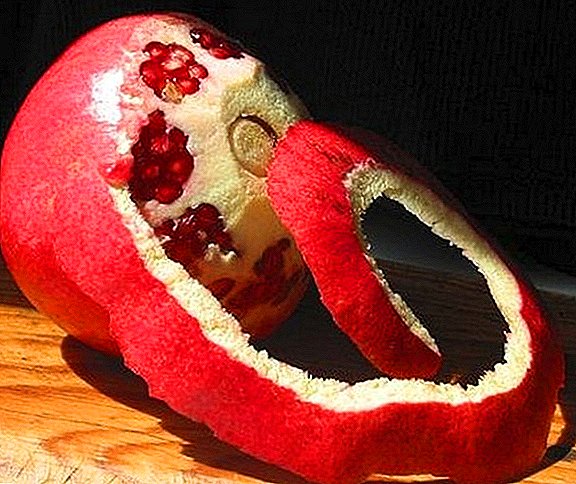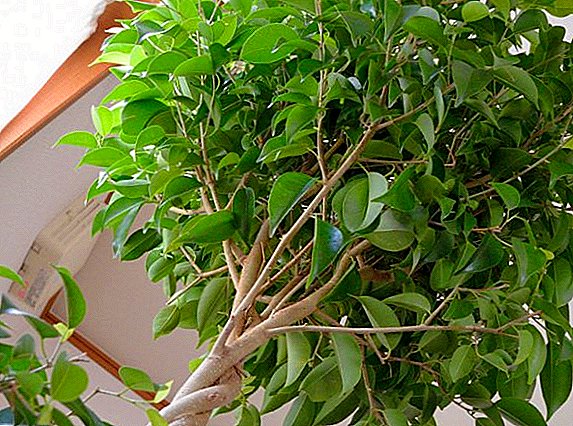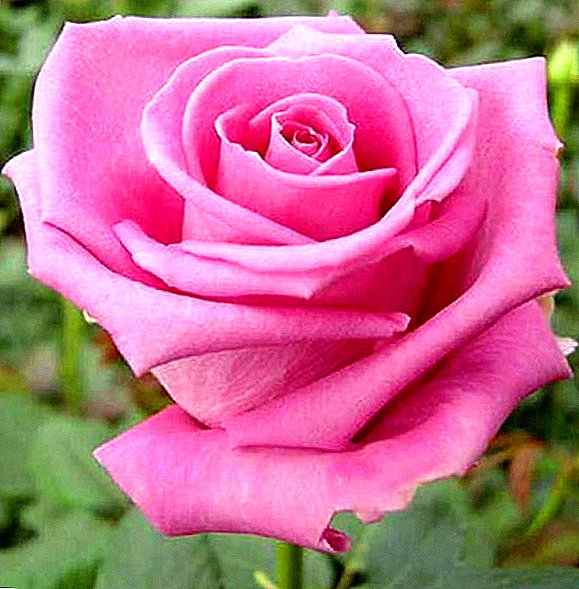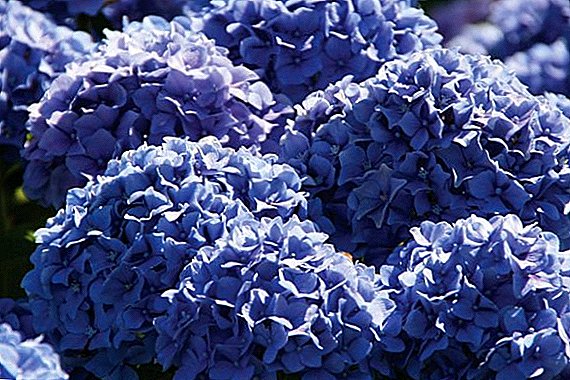 Hydrangea is a shrub plant belonging to the genus Hydrangievyh (Hydrangeaceae). It is of interest for flower growers due to the beautiful lush blooming with large inflorescences of various colors: white, blue, pink, blue. Homeland hydrangeas - China and Southeast Asia. The plant was introduced into culture at the end of the 18th century.
Hydrangea is a shrub plant belonging to the genus Hydrangievyh (Hydrangeaceae). It is of interest for flower growers due to the beautiful lush blooming with large inflorescences of various colors: white, blue, pink, blue. Homeland hydrangeas - China and Southeast Asia. The plant was introduced into culture at the end of the 18th century.
Did you know? The name of the genus is derived from three words: hydor - water, angor - longing, hortis - garden, which means "wistful for water". Another version suggests that the source name Hydrangeaceae are the words hydor - water and aggeion - a vessel. Whatever it was, and the name displays the main feature of the plant - hydrangea is very moisture-loving.
Previously, the hydrangea was considered a whimsical and capricious plant, but thanks to the efforts of breeders, species were developed that even a novice gardener can grow without any particular hassle.
One of them is the Hydrangea paniculata (Hydrangea paniculata), which is attractive primarily for its ability to tolerate low temperatures and long flowering. On the other advantages of the hydrangea paniculata and its best varieties, we will discuss in this article.
Paniculate hydrangea is characterized by large and long inflorescences-panicles - up to 30 cm in height. The shrub itself can grow from 1 to 10 meters in height. When blooming flowers have a greenish-white or creamy-white color, closer to the flowering period, they turn pink, by the end of flowering turn red. Duration of flowering - from June to October. The first bloom occurs four to five years after planting.
This species prefers to grow in open areas, in the penumbra it will produce smaller inflorescences and develop more slowly. Does not like sandy soils. Of the plant care activities, regular watering and timely pruning are key. This hydrangea is almost not affected by diseases and parasites.
Important! It is advisable not to plant a hydrangea in the immediate vicinity of fruit trees, since then they will join the fight for water.
Attention of breeders attracted shrubs in the late twentieth century. Since then, more than 25 varieties of hydrangea paniculate have been bred, a description of the most interesting varieties is presented below.
Grandiflora
Grandiflora (Grandiflora) derived one of the first. Differs somewhat late onset of flowering compared with other varieties - produces flowers in July. Ends flowering in September. Interesting in this variety coloring inflorescences. When the shrub only begins to bloom, the flowers on it are creamy white, become pure white in the process of flowering, then pink, and when fading they turn greenish red.
Did you know? By undertaking certain manipulations, it is possible to obtain flowers of other colors from hydrangea. So, when watering before flowering with a solution of aluminum or ammonia alum, the white sepals of the plants will turn blue, and the pink ones - purple. The introduction of iron into the soil gives a blue color. Also, to obtain the blue color is used watering copper sulphate.
Grandiflora shrubs grow large - up to 2 m, with a rounded sprawling crown. The variety also has beautiful leaves, they are dark green, velvety, pointed. The plant prefers to grow in sunny areas, but can tolerate light penumbra. Paniculata hydrangeas Grandiflora variety resistant to frost, young plants for the winter to cover.
In the decorative culture, this variety is best used in the standard form. It is also used for forcing. If dried inflorescences, they are perfect for decorating winter bouquets.
Kyushu
The Kyushu variety (Kyushu) can be easily distinguished from other varieties by its dark green glossy leaves with red petioles. It also stands out with fragrant flowers. Blooms in mid-July. Flowers classic white color. Flowering ends in September. Shrub grows up to 3 m in height and diameter. He loves the light, but can tolerate partial shade.
In culture it is used in misborders, Japanese gardens, group plantings and alone.
Did you know? The variety got its name from the Japanese island of Kyushu. There he was discovered in the wild in 1926, then delivered to Europe.
Matilda
The variety Matilda (Mathilda) is marked by rather high conical-shaped inflorescences (25 cm) and a large bush - up to 1.8-2 m. During the flowering period from July to September, it changes flower shades four times - from creamy-white to white, then in autumn the flowers turn pale pink and finish blooming greenish-red. Survives at low temperatures.
Tardyva
Later, than all other varieties, Tardiva blooms. Flowering begins in the second half of August, and ends with the onset of frost. Its inflorescences have narrow conical and pyramidal forms. The flowers are creamy white, eventually turning pink.
In order not to lose the decoration, Tardiva bushes are better planted in open sunny areas. In winter, young plants require shelter. The shrub becomes older, the more it is resistant to cold.
Important! Hydrangeas will delight with abundant flowering in properly selected soil. They prefer loose, moist soils rich in humus. Can grow on sour, clay and peat ground. They do not like sandy and calcareous soil.
Tardiva bushes are used for mixed plantings with perennials in shrub mixborders. Dried inflorescences are used in bouquets.
Limelight
Limelight bushes (Limelight) reach a maximum height of one and a half meters. The inflorescences of this variety have a pronounced lemon or green hue. At the end of flowering become pink. In the front gardens, these hydrangeas look beautiful both alone and in group plantings. Together with other shrub plants they are used in mixborders. Inflorescences are suitable for winter bouquets.
Pinky Winky
Pinky Winky is valued for strong, resilient stems that are able to withstand large, heavy inflorescences 15–20 cm in height without support. The flowering of this hydrangea is a wonderful sight. Just like all hydrangeas, Pinky Winky changes the color of the inflorescences depending on the flowering period - in July they are white and in September - dark pink. Since this process occurs unevenly, the inflorescences at the same time can be colored differently: for example, they can be pink from the bottom, light pink in the middle, and white on the tips. And on the very bush can be as pure white inflorescences, and completely dark pink.
Shrub grows up to 2 m in length and width. His crown is round. It prefers to grow in open areas, but not in direct sunlight. This hydrangea is often planted near the entrance to the house or yard, near the gazebos, benches, as a hedge. Suitable for both single and group landings.
Vanilla fraiz
Another popular type of hydrangea paniculata is the Vanille Fraise variety. These shrubs reach a height of 2 m and a width of 1.5 m. At the very beginning of flowering, the pyramid inflorescences are white in color, but they quickly change shade and become richly pink. This variety is light-requiring and frost-resistant.
Did you know? Hydrangea paniculata is characterized by good resistance to polluted air. Therefore, it can be planted in city beds, along busy motorways.
Bombshell
In hydrangea paniculata derived and stunted varieties. These include, for example, the Belgian hydrangea Bombshell (Bombshell) - it grows only 70-80 cm. At the same time, the bush blooms profusely. The inflorescences of this hydrangea are round, slightly elongated, 13 cm high. Change the color from green-white to pink. In the process of flowering and as the inflorescences become heavier, the branches bow downward, thus forming a spherical crown. Duration of flowering is very long - from June to mid-autumn.
Plants of this variety can be planted in partial shade. Suitable for cultivation in the container.
Did you know? Hortensia refers to the shrubs-long-livers. The literature contains information about plants aged 60 years.
Presox
Bred by Japanese breeders variety Presoks (Rgaesoh) differs in the earliest flowering - inflorescences appear in June. It has small inflorescences, petals with cloves at the ends.
Floribunda
A popular variety among Europeans, Floribunda blooms with very large white-cream conical inflorescences on long pedicels. Against the backdrop of contrasting dark foliage, flowers look very elegant. The shrub grows to 2 m. It blooms from July to September. Prefers well-lit areas, sheltered from drafts.
Adult plants are characterized by high frost resistance. Young bushes for the winter require shelter. Floribunda on the lawn is especially beautiful in combination with coniferous crops or other ornamental shrubs.
Great Star
Perhaps, you will not confuse the hydrangea of the French variety Great Star with any other. It has a unique shape of inflorescences, which are formed from two types of flowers: sterile - large white (up to 10 cm) with curved petals, similar to propellers or stars, and fertile - small, unremarkable. There are about 17 fruitless flowers in the inflorescence, 200 fruit plants.
Adult bushes grow up to 2 m in height and width. Have a wide spreading crown. Plants of this variety are light-requiring, but they maintain a light shade. Like most hydrangeas, Great Star is unpretentious, does not require a garter. Used in single and group plantings.
Silver dollar
Tall and lush bushes form the Silver Dollar variety. In height and width, they reach 2.5 m. The crown in shape they have a smooth, rounded. Shrub blossoms from July to September, large inflorescences of white-green in the form of pyramids. A little later, the flowers become silvery, and in autumn they turn a lilac-pink shade.
The plant is equally decorative as the sun (not under direct rays), and in light shade. Maintains winter temperature up to -29 ° С. Plants of the first two years to winter should be protected under cover.
Used in soliternyh and group plantings. Beautiful silver lush hedges come out of the Silver Dollar hydrangea, they decorate the areas along the garden paths and paths in the city parks. It goes well with perennials from other families.
Phantom
Phantom variety (Fantom) stands out among its fellows by the form of the largest cone-shaped inflorescences and beautiful bush form. The height and width of the shrub is within 2 m. Traditionally, for hydrangeas, the flowers change color from the beginning to the end of flowering - in summer they are creamy, in the autumn - pink. Phantom blooms in July.
Winter-hardy variety, suitable for planting in semi-dark areas. In landscape design, it is planted as a soliter and in plantings in groups, in combination with other perennial crops. Panicle hydrangea is actively used in breeding experiments and today, recently, new varieties have been bred. Among them are Ammarin, Big Ben, Bobo, Brussels Lace, Dolly, Early Sensation, Mega Mindy, Shikoku Flash, Mustila and others.
Hydrangea paniculata - very beautiful plant and for good reason popular among florists and breeders of different countries. And no matter how much we try to describe the decorativeness of this plant with words, you can just look at the photos with abundant flowering shrubs, love this flower and want to decorate it with a garden or balcony.


